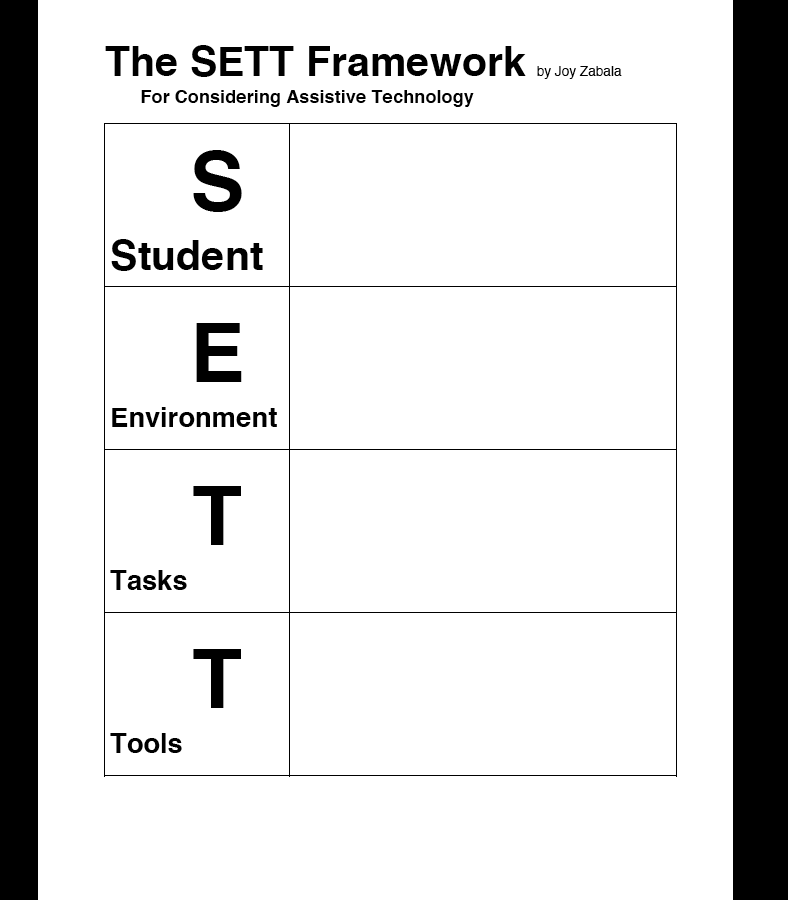- There are far more than four models of AT assessment.
- The four models I chose to present were:
- Education Tech Points (by Bowser & Reed, 1995)
- Matching Person and Technology (by Scherer and colleagues, 2002)
- Human, Activity, Assistive Technology (by Cook & Hussey, 2002)
- Student, Environment, Task, and Tool (by Zabala, 1995)
- The commonalities I noticed (as I discussed in a previous blog about Alberta's education system) were student/individual, task, context, and technology. (What I would learn more about in class was time.)
- The SETT model is sometimes referred to within other models.
- Assessment is not seen as a one-time event, but as an ongoing occurrence.
- Assessment requires a collaborative effort on the part of a team which should include the student.
As aforementioned, the one factor of which I had not taken great notice in my research for the presentations this week was time. Between the class discussions and my review of Scherer's table of how milieu, personality of user, and the technology itself can influence a person's use of AT, I have come to understand more about the importance of time as a factor influencing AT assessment. Although I had seen that the models called for assessment to be more than a one time event, I did not take note of concerns about how the user changes over time, how the user may need time to learn to use the technology, or how the technology may require time to be updated or serviced when problems occur.
In the image below, I began to show some of the links between the five factors. As you might imagine, however, the links between the factors are extensive. It is difficult to fit every link on the diagram. (As I write this sentence, it strikes me that I didn't write that the environment may have or lack supports - teachers, friends, and family - for the student.) In addition, it is difficult to consider one factor without considering the others. Although the links flow from one factor to another, sometimes the link note refers to a third factor.
(Note: For some reason, the five factors common to the AT assessment models remind me of Schwab's four commonplaces: student, teacher, milieu, and content, and this makes sense to me since we are considering AT in the context of education.)
Resources: For more information about the assessment models, visit the websites listed below.
Education Tech Points
http://www.dinf.ne.jp/doc/english/Us_Eu/conf/csun_99/session0089.html
 Ñ
Ñ http://www.homemods.org/resources/pages/ATAssess.shtml
Human, Activity, Assistive Technology (HAAT)
Student, Environment, Task, and Tool (SETT)

 Ñ
Ñ http://www.joyzabala.com/uploads/CA_Kananaskis__SETT_Horses_Mouth.pdf

I love the way you used Inspiration to link student, environment, task, technology, and time. This is a great visual that represents the interconnectedness of all the 5 factors. I hadn't thought of Schwab and his commonplaces in relation to AT until you mentioned him. What a great connection! Schwab also puts the Learner at the center with all other factors revolving around him/her.
ReplyDelete